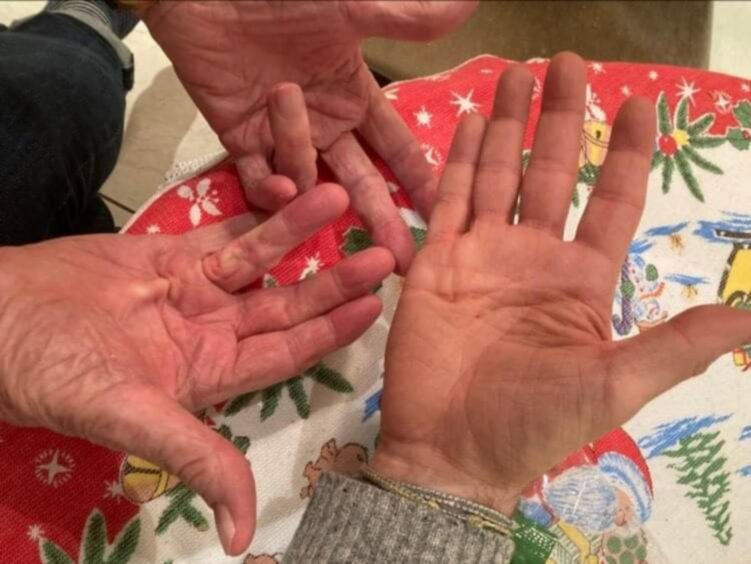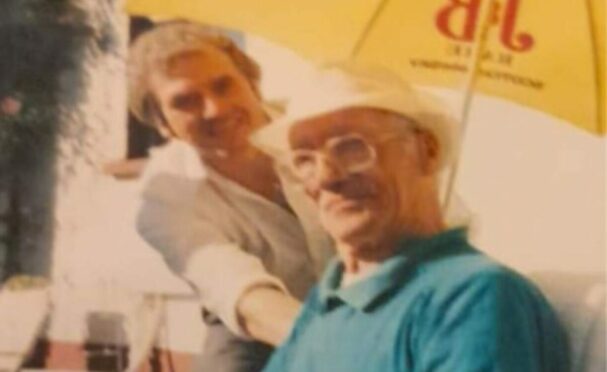
My grandad had funny fingers. They curled up like he’d taken them off, left them out in the sun to dry, put them back on and tried to use them again.
Nobody really knew much about what was wrong. I knew he’d been to the hospital and they’d done something, but whatever it was hadn’t worked
What did I care? I was 10. He could still do that funny trick with the butter knife and wee bits of paper, so I didn’t see a problem if he couldn’t open a jar of whelks because his hands had turned to concrete.
One Christmas, when he handed my mum back a pair of gloves she’d given him with good intention, waving his gnarly digits in the air and the floppy-fingered gloves in the other, asking: “What am I supposed to do with these?” we all fell about laughing. And still do.
“White finger,” it was erroneously called for a while, because he’d worked in the shipyards and vibrations from machines had maybe jiggered his muscles and nerves.
Not so. The root cause of his curled fingers and ossified palms didn’t lie in the shipyards. It lay six feet under, hundreds of years ago and hundreds of miles away on another island.
My dad’s fingers started to bend in his late 50s. He told the story about how, at the start of his working life, he came home from his apprentice grocer’s job and told his father he didn’t feel like he was doing a real job, because his hands weren’t dirty like his dad’s had been in the yards.
Dad switched to building cars at Linwood, then eventually became the manager of a bar. No hydraulics, no rivets. Yet still came the curly fingers.
My grandad died in his 70s. I remember looking at his hands, and seeing how the undertakers hadn’t been able to intertwine his fingers properly as he was laid out in his coffin. By the time my father had retired in his early 60s, two fingers of one hand couldn’t be fully straightened.
Doctors had had a good look at it. “The Viking disease,” it was called in the house. What did I care? I was just hitting my 20s. Dad would be fine. He grew up left-handed at a time when teachers still tried to convert “corrie-fisted” kids. Anyway, mum opened the jars.
A few years back, when I showed dad the wee lumpy nodule forming under the palm of my right hand, he nodded in recognition. By now, the Viking disease had been given its proper name.
Dupuytren’s contracture, the medics called it. “It used to be called the Viking disease,” they’d say, as if the thought that the genetically acquired syndrome slowly attacking your hands might have come from marauding Scandinavians gave it some sort of mysterious allure.
Beyond Tommy, my grandad, our knowledge of the curly fingers’ reach was in darkness. Whatever memories had been passed down the line about John, my dad’s grandad, and Lawrence, his great grandad, they weren’t about diseases of the hand.
In fact, there was very little said about Lawrence, other than a vague mention that he’d had children in Liverpool, detail I was able to put a bit of skin on the bones of with the help of a pal who dabbled in genealogy. Lawrence landed in Birkenhead in the 1800s, from Dublin, we discovered, his son John moving from Seaforth to Port Glasgow.
It all finally gave credence to that favourite line of family mythology. “English? Aye. But it’s an Irish name, you know.”
None of us were ever totally sure. My maternal cousins still live in Donegal but tracing the Englishes over the Irish Sea hit a dead end up a long-gone street on Merseyside.
Lawrence likely left on a boat from the Liffey, where the Irish Emigration Museum stands now. I visited it last year in Dublin. There was a poster for the Irish Family History Centre offering genealogy sessions in the museum. Armed with a few photos of headstones in the Port Glasgow cemetery, I booked a slot with Patrick Roycroft.
Thirty minutes later, I walked out with the names of my great-great-great grandparents, John and Margaret English, and the name of the tiny farming townland in County Wexford, where they had their children baptised.
Wexford, Patrick told me, had been heavily raided by the Vikings. I laughed as I got up to leave and showed him my hand, the tell-tale signs of the apocryphal Viking disease having become more visible in the months before. Maybe one day I’d make it down to the village of Adamstown, County Wexford, I thought.
Twelve months later, I parked the car on its main road and stepped into its only pub, Cullen’s. Gerard, the owner, was closing up after a wake, this being rural Ireland, and his pub backing on to an ancient graveyard.
I asked Gerard if he knew any Englishes, and he eyed me as if I’d asked him if the Pope went to mass. There were likely a few in the graveyard behind me, he explained, but a few others who might be better able to answer my questions than them.
“I know a Jim English, a Paddy English and an Andy English,” Gerard said, giving me directions to a house out in the fields where, he wondered, if Jim might be able to help.
I wandered around the cemetery and found no obvious graves, absently tapping the unmarked headstone of one with my shoe and commenting that, who knows, my lot might be in there, before driving on with Gerard’s directions.
The sight of a stranger at the door asking about the graves of distant relatives didn’t startle octogenarian Jim in the least. After offers of cups of tea, he jumped in his car and told me to follow him to visit Paddy, his cousin.
“Paddy might know,” he told me, before heading off into winding country lanes, followed by a guy who’d blown in from Scotland claiming to share his surname.
Paddy was sitting on his front porch when we arrived, surrounded by sons, daughters, in-laws, grandchildren and his dog, Gloves.
I set about explaining to these strangers how I’d come to be at their door, unannounced, in this most rural of settings, a million miles from my life in Glasgow. I told what I’d learned of my lineage, about Tommy, John and Lawrence, about Birkenhead, Seaforth, Dublin and Wexford, and how I was wondering about John and Margaret, here in Adamstown, the bones of 200 years later.
Paddy, in his 80s, was engaging and voluble. He shared stories of Adamstown Englishes going back centuries, their highs and lows. He explained one theory that our name had been attached to northern European soldiers who’d agreed to fight for Queen Anne in return for land in Ireland.
He and his daughter toured me around the cemeteries of the villages of Galvally and Enniscorthy, visiting more graves of folk with my surname than I’d ever seen before, ultimately without any obvious connection.
Even when we returned to Adamstown cemetery, where Paddy told me that one of the unmarked graves – whose nubby headstone I’d tapped with a trainer earlier – was likely an English grave, there was still no name rooting my line to theirs.
In the end, I didn’t need it.
Shaking hands with Jim and Paddy on the front porch, I was reminded, as I am now on every handshake, of the puckered skin and lumpy knots in my right hand.
I showed the men my palm, and explained how my father, aunts, sister, cousins and grandfather all had the same to greater or lesser degrees.
Neither had heard of Dupuytren’s. Yet, as they turned their own palms up, there was the evidence that these elderly Englishes of Adamstown – this tiny dot in the rolling Irish countryside where my great great great grandparents once looked at the same hills – must be my Englishes.
Lumpy knots. Puckered skin. Living proof in body and soul, beyond certificates and gravestones.
I returned home and shared the news with my dad, cousins, aunts and uncles, some who’ve also been wondering why their fingers and hands are curling like old leather.
Days later, an email arrived from Paddy’s daughter, outlining some sketchy research her father had done, connecting John, Margaret and Lawrence to their own lines. It was another dot joined, yet somehow it felt like a footnote in the search as I left Adamstown.
All I needed was right there in the palm of our hands.
The condition
Dupuytren’s typically appears in middle age when fibrous nodules adhere to the sub-dermal skin of the palm, often forming chords extending to the finger which can, over time, pull the digit towards the palm, unable to be straightened.
Treatment includes surgery, injection or a process known as a needling, with collagen injections also now being used in some cases. There is no cure for the condition.
Bill Nighy, Margaret Thatcher, Frank Sinatra and Ronald Reagan are among the well-known names to have had the disease.

Enjoy the convenience of having The Sunday Post delivered as a digital ePaper straight to your smartphone, tablet or computer.
Subscribe for only £5.49 a month and enjoy all the benefits of the printed paper as a digital replica.
Subscribe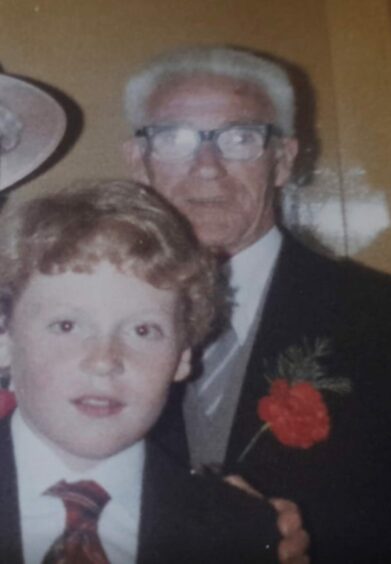
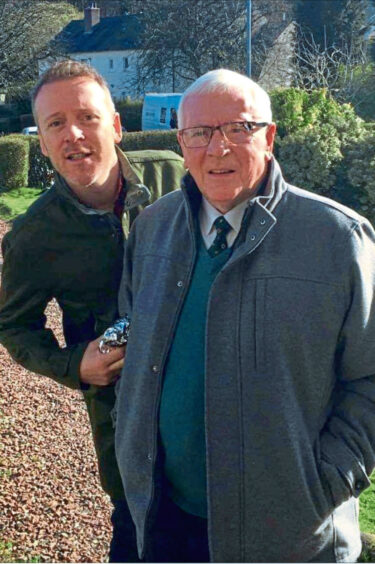
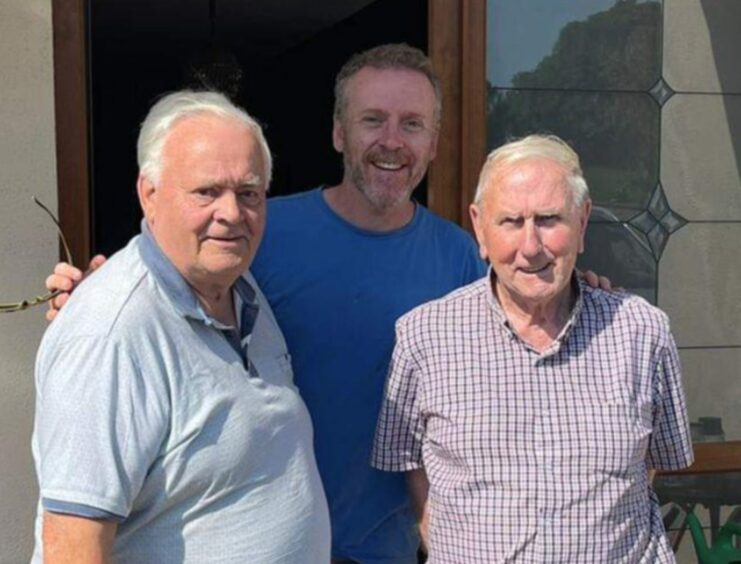 © SYSTEM
© SYSTEM